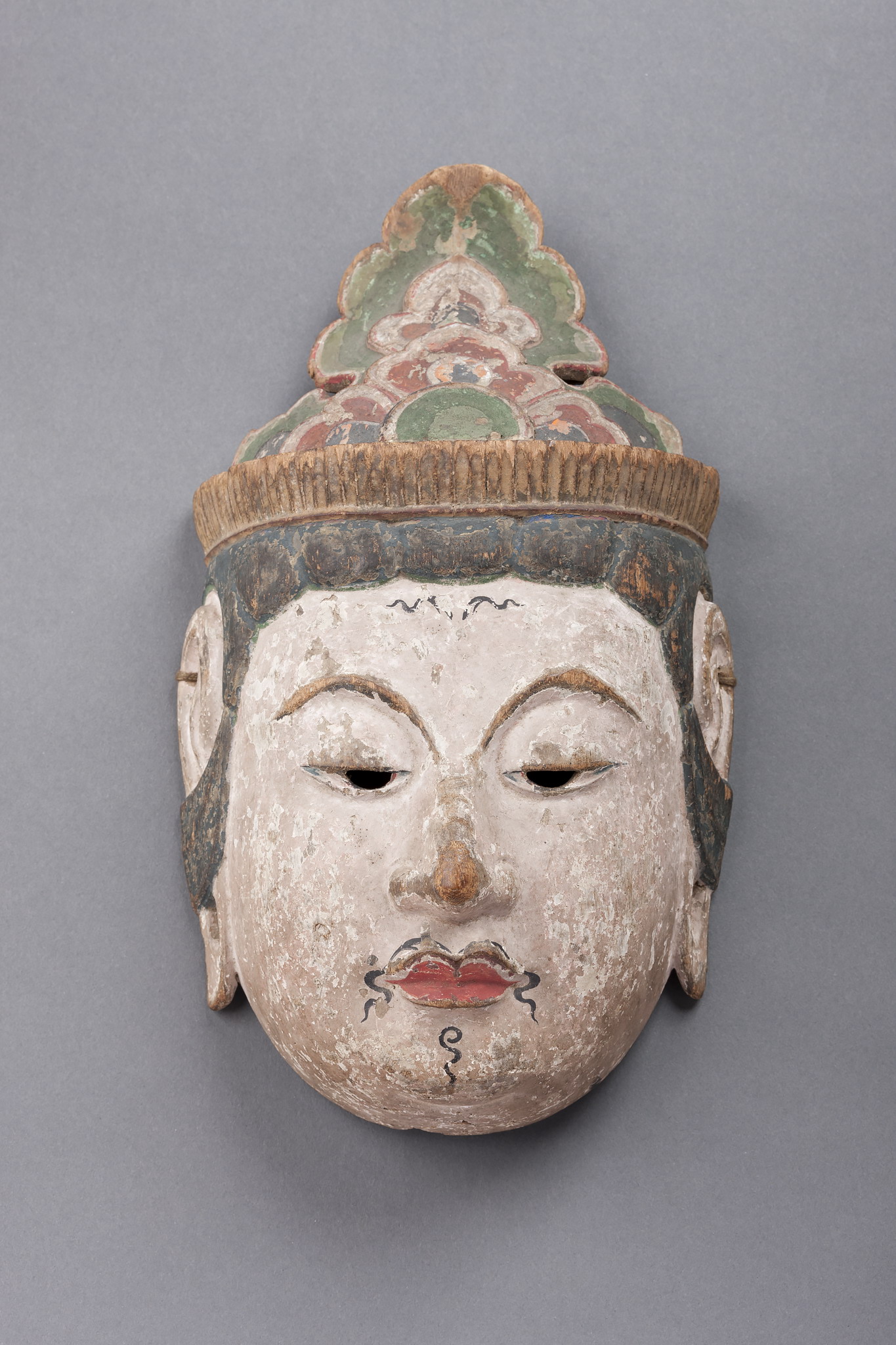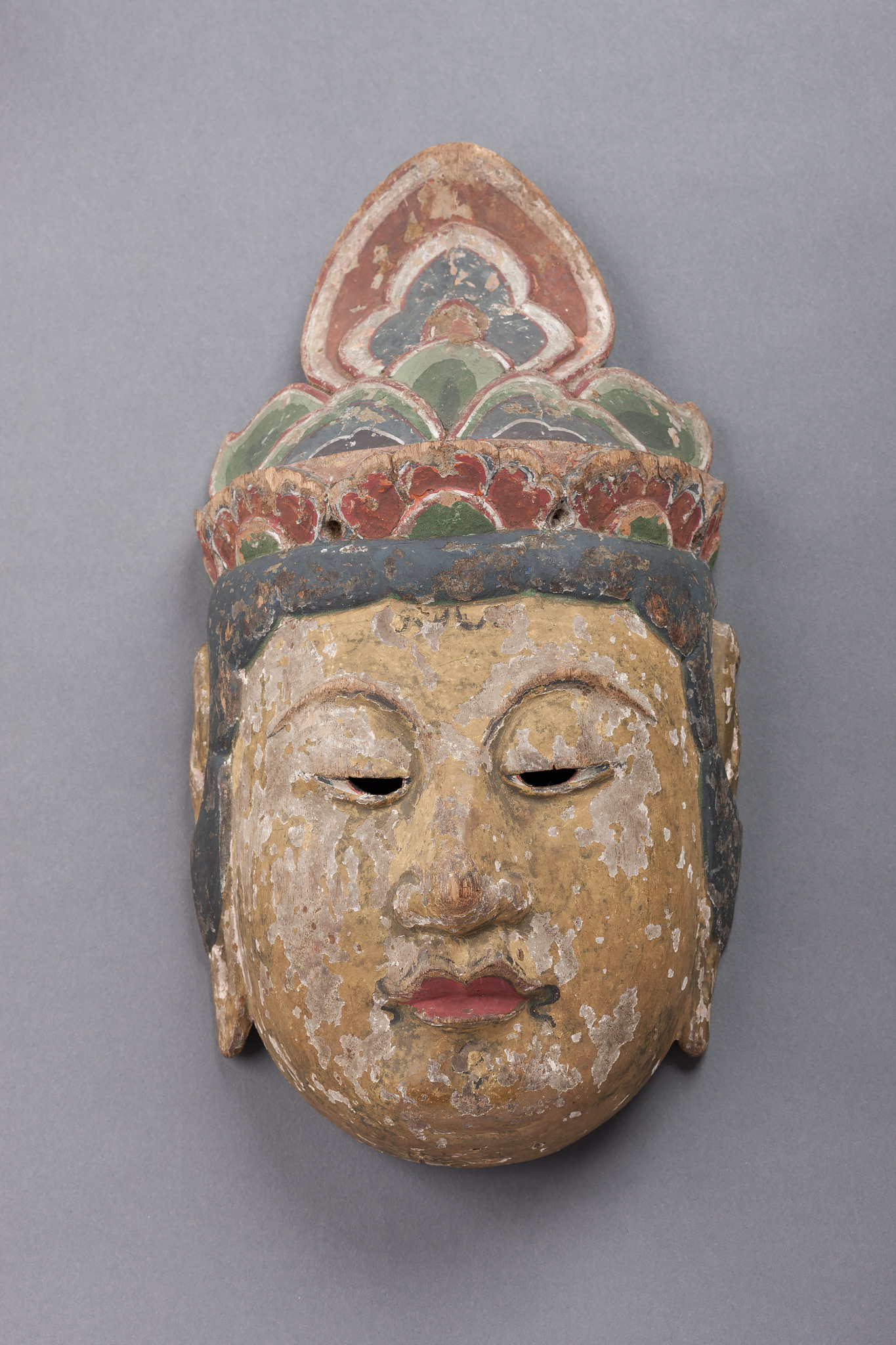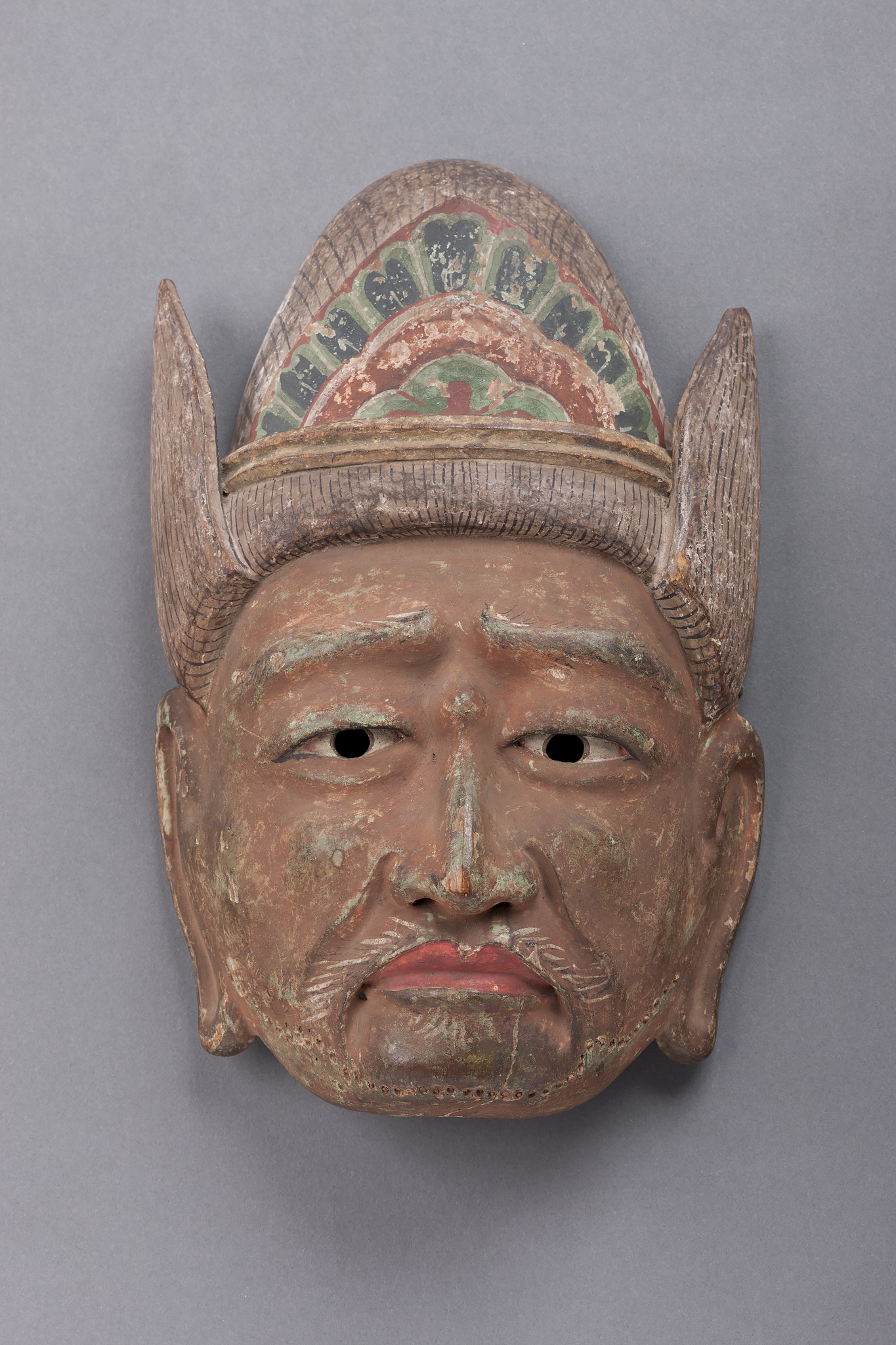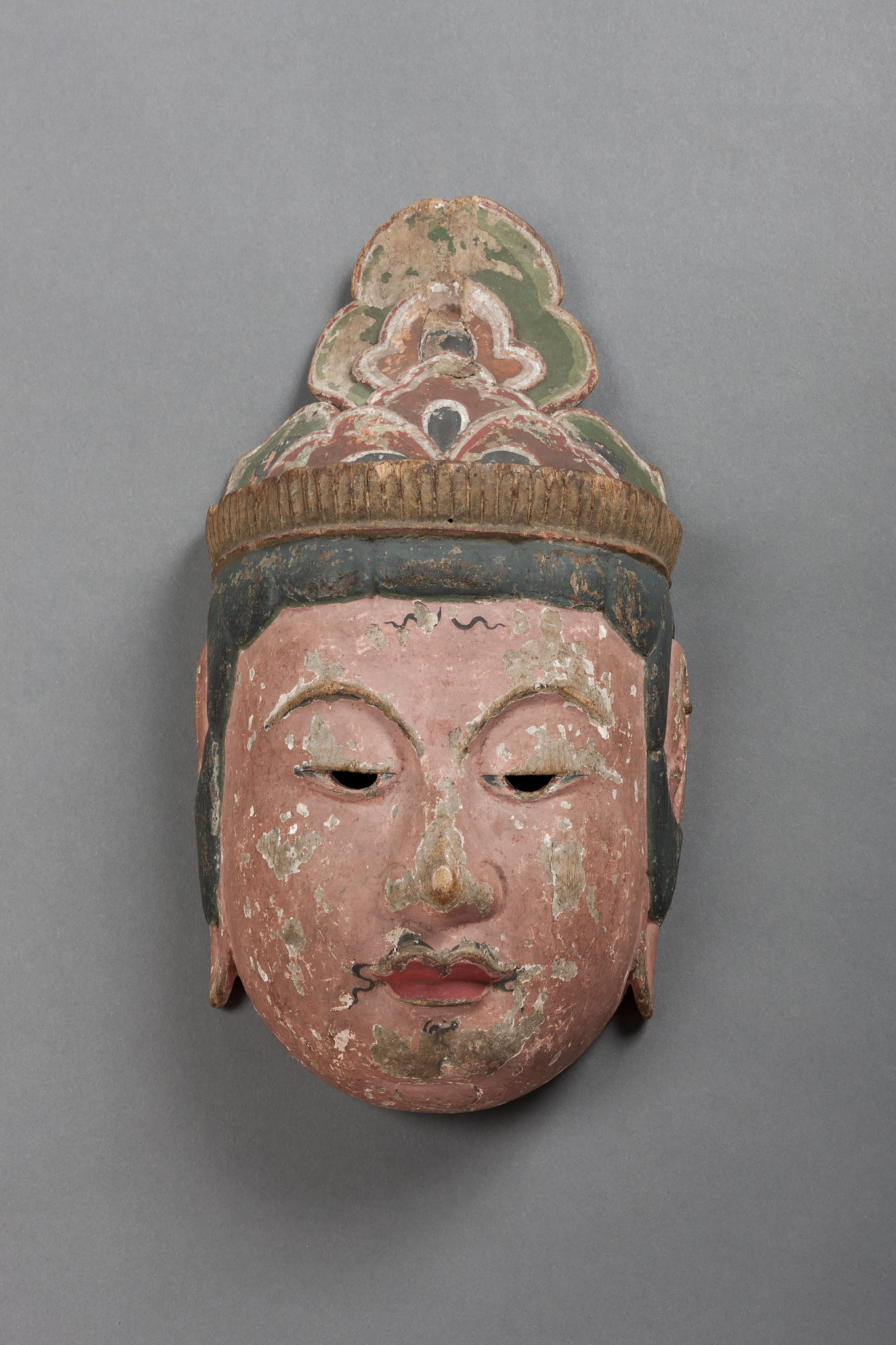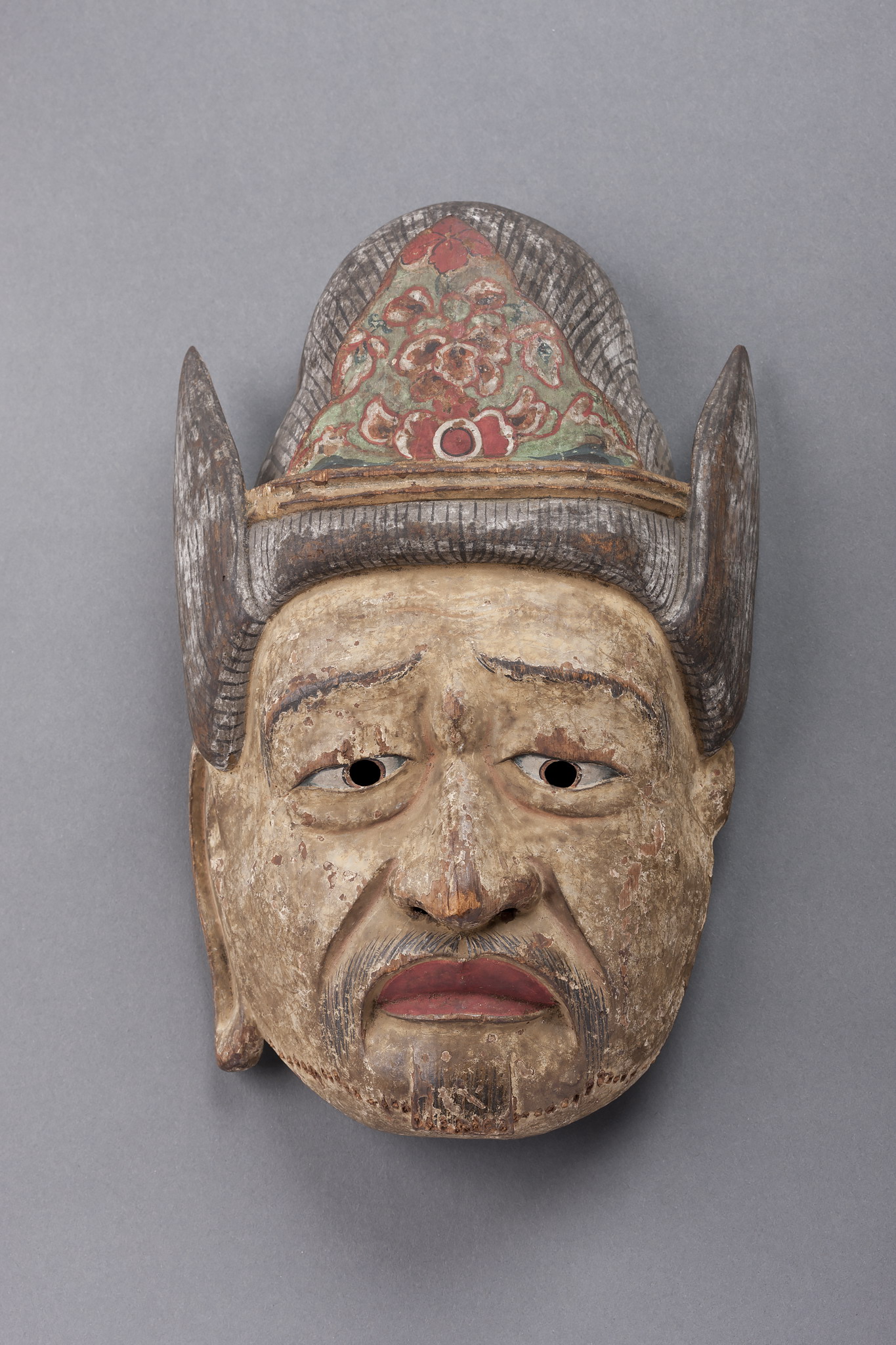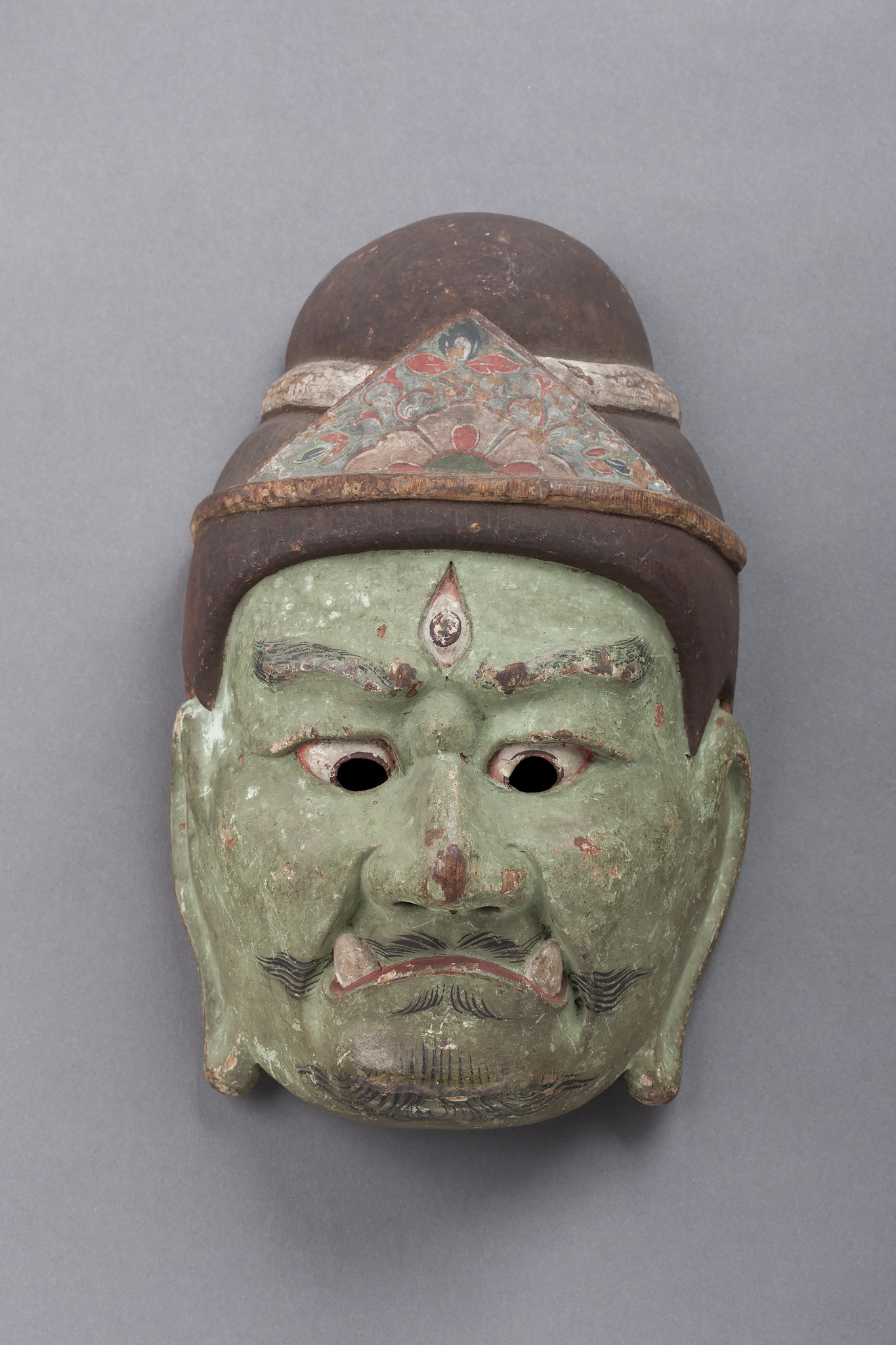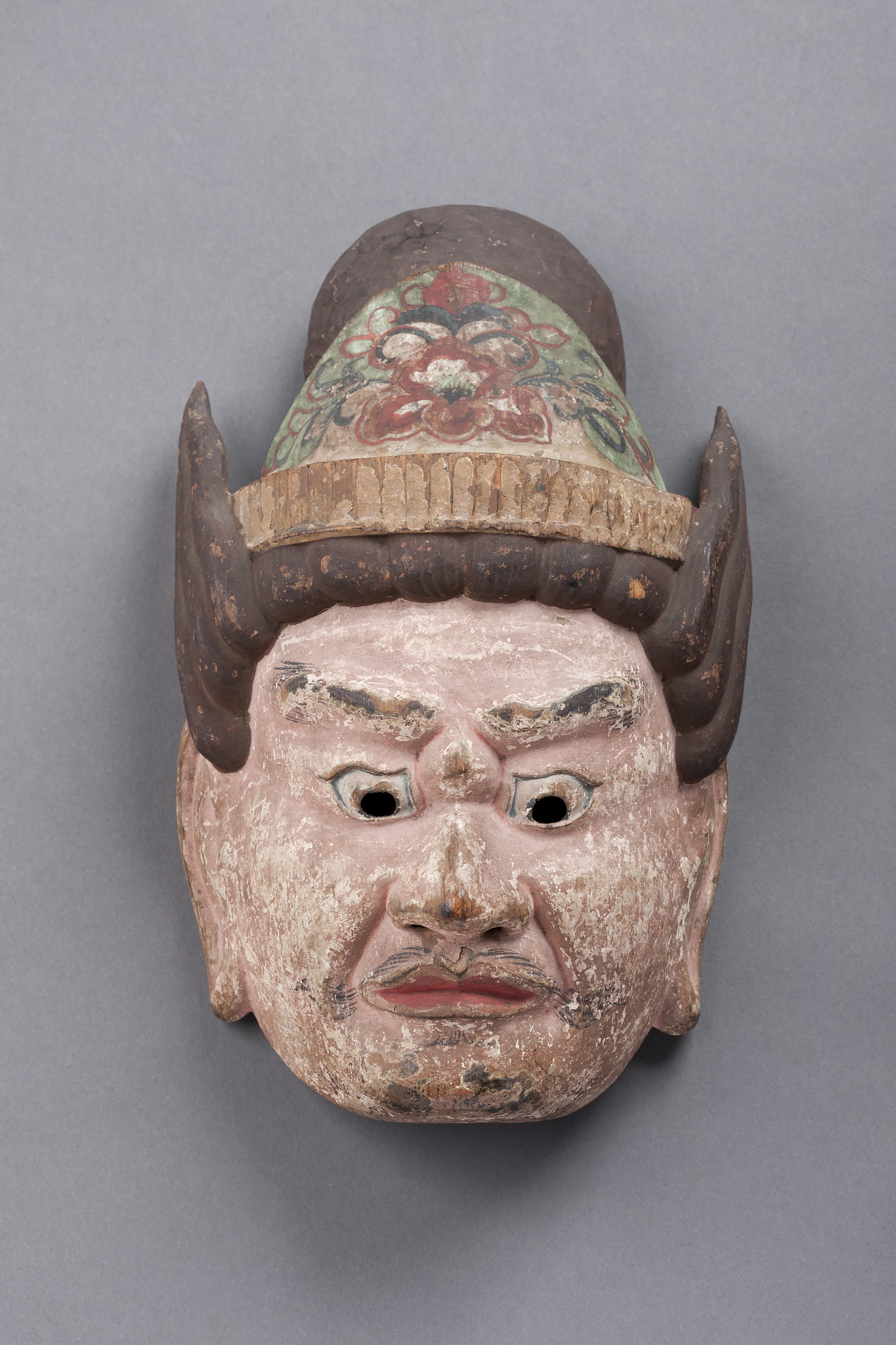- TOP
- The KNM Collection
- Masterpieces of the KNM
- Sculpture
- Processional Masks of the Twelve Devas
*Click or tap image to enlarge.
Sculpture
Processional Masks of the Twelve Devas
- Japan, Late-Heian Period, End of 10th century
- Colored paulownia and cypress wood
- H. 29.2cm-32.6 cm
- Kyoto National Museum (CK18)
These seven masks are part of a set of processional masks of the Twelve Heavenly Beings that were used in the consecration ritual (J., kanjo-e) at To-ji Temple, which included a procession of musicians dressed in costumes of the Twelve Devas (J., juniten). Stylistic elements suggest that the masks were sculpted around the late tenth century. Some scholars hypothesize that they may have been made in honor of the retired Emperor Enyu (959-991) in 989, when he underwent the Two Worlds Consecration ritual, an ordination into the highest level of priesthood. Of the twelve, the Kyoto National Museum has the masks of Taishakuten (Skt., Indra), Bonten (Skt., Brahma), Nitten (Skt., Surya), Katen (Skt., Agni), Futen (Skt., Vayu), Bishamonten (Skt., Vaisravana), and Jizaiten (also known in Japanese as Ishanaten; Skt., Isana).




